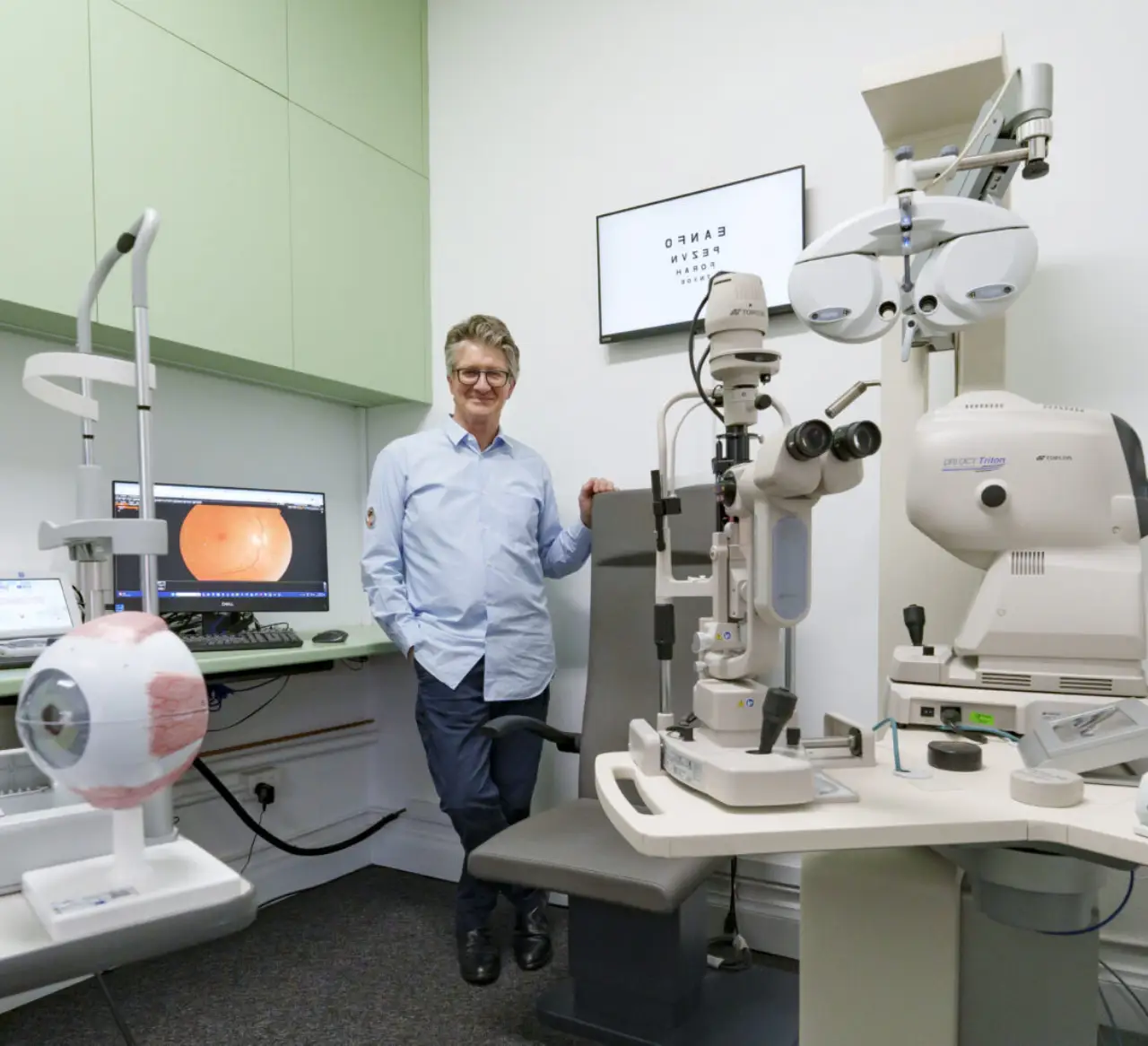The Digital Age and Your Vision
In today’s hyperconnected world, digital devices have become an essential part of our daily lives. The average Australian spends over 10 hours a day looking at screens – from morning email checks on smartphones to workday computer use and evening streaming sessions. While these technologies enhance our productivity and connectivity, they’re also creating unprecedented challenges for our visual system.
What is Digital Eye Strain?
Digital Eye Strain (DES), also known as Computer Vision Syndrome, refers to a collection of eye and vision-related problems resulting from prolonged digital device use. Unlike reading printed materials, viewing digital screens involves unique challenges:
Reduced Blink Rate: When focusing on screens, our blink rate drops by nearly 60%, from about 15 blinks per minute to just 5-7 blinks per minute
Constant Refocusing: Our eyes continuously adjust to changing content, different viewing distances, and varying levels of brightness, contrast, and glare
Improper Viewing Angles: Many people view screens at suboptimal distances and angles, creating additional visual stress
Recognizing the Symptoms
Digital Eye Strain can manifest in various ways, and symptoms typically increase with the amount of digital screen use. Common signs include:
Visual Symptoms
Blurred or fluctuating vision
Difficulty refocusing between near and far objects
Increased light sensitivity
Dry, burning, or itchy eyes
Red or watery eyes
Physical Symptoms
Headaches (particularly frontal headaches)
Neck, shoulder, and back pain
General eye fatigue or heaviness
Difficulty keeping eyes open
Performance Impact
Decreased concentration and productivity
Increased error rate in tasks
Slower reading speed
General discomfort that worsens throughout the day
Who’s at Risk?
While anyone who uses digital devices can experience Digital Eye Strain, certain factors can increase your risk:
Those who spend 2+ hours continuously on digital devices
People with uncorrected vision problems
Individuals with aging eyes (typically over 40)
Contact lens wearers
People working in poorly designed ergonomic environments
Those with certain eye conditions like dry eye syndrome
Comprehensive Solutions for Digital Eye Strain
Optimize Your Device Settings
Adjust Screen Brightness: Match your screen brightness to your surrounding environment
Increase Text Size and Contrast: Reduce strain by making content easier to read
Apply Color Filters: Many devices now offer “night mode”.
Clean Your Screen: Regularly remove dust and fingerprints that can reduce clarity
Perfect Your Workspace Ergonomics
Screen Positioning: Place your screen 50-70cm away (arm’s length), with the top of the screen at or slightly below eye level
Proper Lighting: Eliminate glare from windows and overhead lights with proper positioning or anti-glare screens
Ergonomic Seating: Ensure your chair supports good posture with feet flat on the floor
Document Holders: Position reference materials at the same height as your screen to minimize head movement
Practice Healthy Screen Habits
The 20-20-20 Rule: Every 20 minutes, look at something 20 feet away for at least 20 seconds
Conscious Blinking: Practice complete, deliberate blinks regularly or use artificial tears if needed
Screen Breaks: Take longer breaks (5-10 minutes) every hour of intensive screen use
Digital Detox: Designate regular periods completely free from digital devices
Professional Eye Care Solutions
Regular Comprehensive Eye Exams: Annual eye examinations can detect and address issues before they worsen
Computer Glasses: Specially designed glasses with anti-reflective coatings and blue light filters
Contact Lens Alternatives: Discuss options if your contacts contribute to dry eye during computer use
Vision Therapy: In some cases, specific eye exercises can help improve visual comfort
Prescription Updates: Even minor prescription changes can significantly reduce eye strain
When to See Your Optometrist
While many digital eye strain symptoms can be managed with the techniques above, certain situations warrant professional attention:
Persistent symptoms despite following recommended strategies
Symptoms that interfere with daily activities or work performance
Visual changes like flashes of light, floaters, or loss of vision
Severe headaches that accompany visual tasks
Eyes that are consistently red, irritated, or painful
How Collin & Kirk Optometrists Can Help
At Collin & Kirk Optometrists, we understand the unique visual demands of today’s digital world. Our comprehensive digital eye assessments include:
Specialized testing for near and intermediate vision (typical screen viewing distances)
Evaluation of eye coordination and focusing ability
Assessment of your specific digital device usage patterns
Personalized recommendations for your unique visual needs
Dr. Richard Vojlay and our team of experienced optometrists can provide tailored solutions, including specialized computer eyewear, prescription recommendations, and ergonomic advice specific to your work and lifestyle needs.
Take Control of Your Digital Eye Health
Digital devices are here to stay, but Digital Eye Strain doesn’t have to be part of your daily life. With the right strategies, environmental adjustments, and professional care, you can enjoy the benefits of technology while protecting your precious vision.
Schedule your comprehensive eye examination today and take the first step toward comfortable, sustainable digital device use.
Remember: Your eyes are your window to the world – they deserve the best care possible in our increasingly digital environment.


